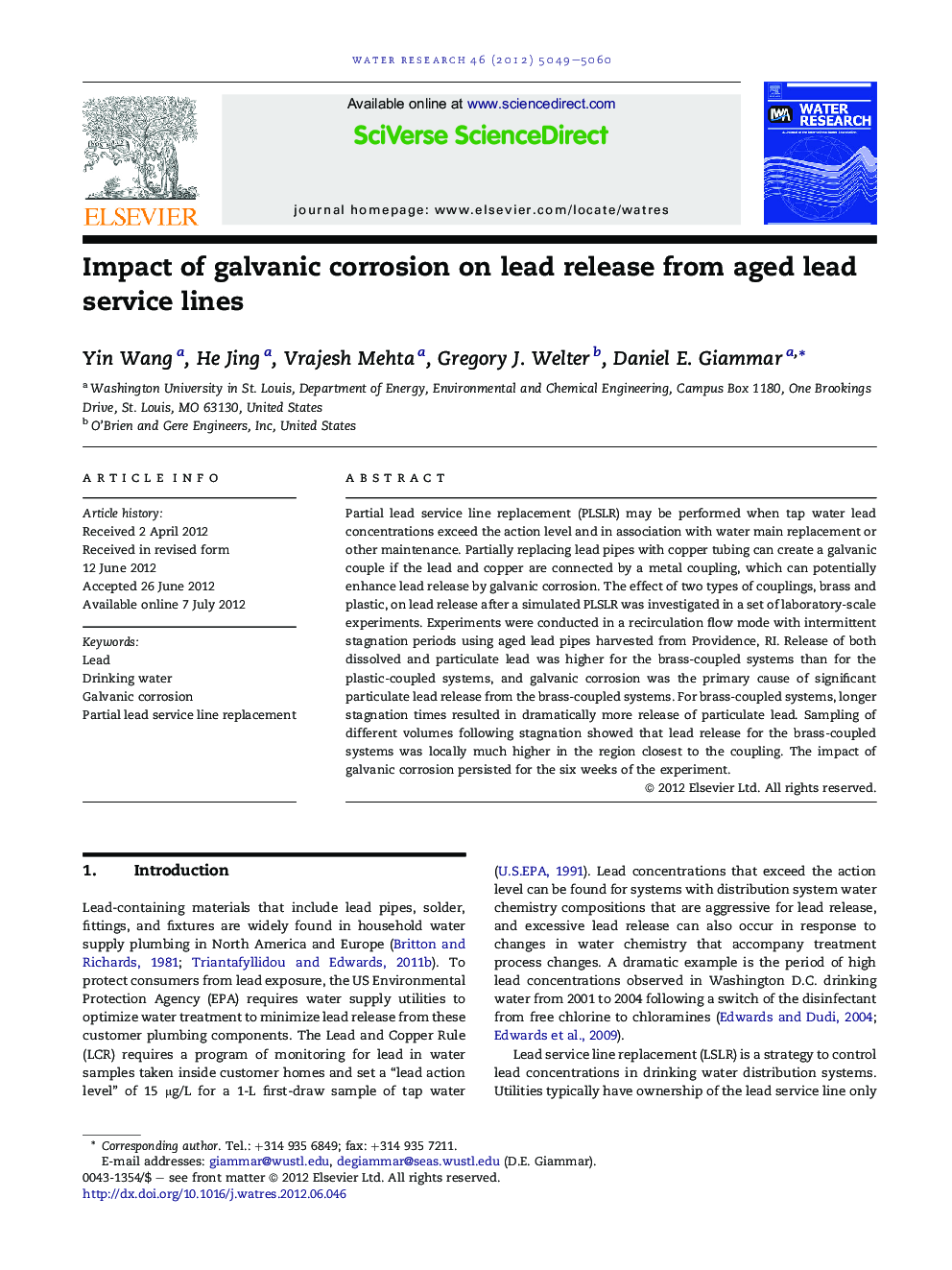| Article ID | Journal | Published Year | Pages | File Type |
|---|---|---|---|---|
| 4482734 | Water Research | 2012 | 12 Pages |
Partial lead service line replacement (PLSLR) may be performed when tap water lead concentrations exceed the action level and in association with water main replacement or other maintenance. Partially replacing lead pipes with copper tubing can create a galvanic couple if the lead and copper are connected by a metal coupling, which can potentially enhance lead release by galvanic corrosion. The effect of two types of couplings, brass and plastic, on lead release after a simulated PLSLR was investigated in a set of laboratory-scale experiments. Experiments were conducted in a recirculation flow mode with intermittent stagnation periods using aged lead pipes harvested from Providence, RI. Release of both dissolved and particulate lead was higher for the brass-coupled systems than for the plastic-coupled systems, and galvanic corrosion was the primary cause of significant particulate lead release from the brass-coupled systems. For brass-coupled systems, longer stagnation times resulted in dramatically more release of particulate lead. Sampling of different volumes following stagnation showed that lead release for the brass-coupled systems was locally much higher in the region closest to the coupling. The impact of galvanic corrosion persisted for the six weeks of the experiment.
Graphical abstractFigure optionsDownload full-size imageDownload high-quality image (146 K)Download as PowerPoint slideHighlights► Aged lead pipes harvested from a water utility were used. ► Galvanic corrosion enhanced lead release from pipes connected to copper. ► The enhancement was particularly large for total lead. ► Galvanic corrosion was localized to the region nearest the coupling. ► Galvanic corrosion persisted for the six weeks of the experiment.
